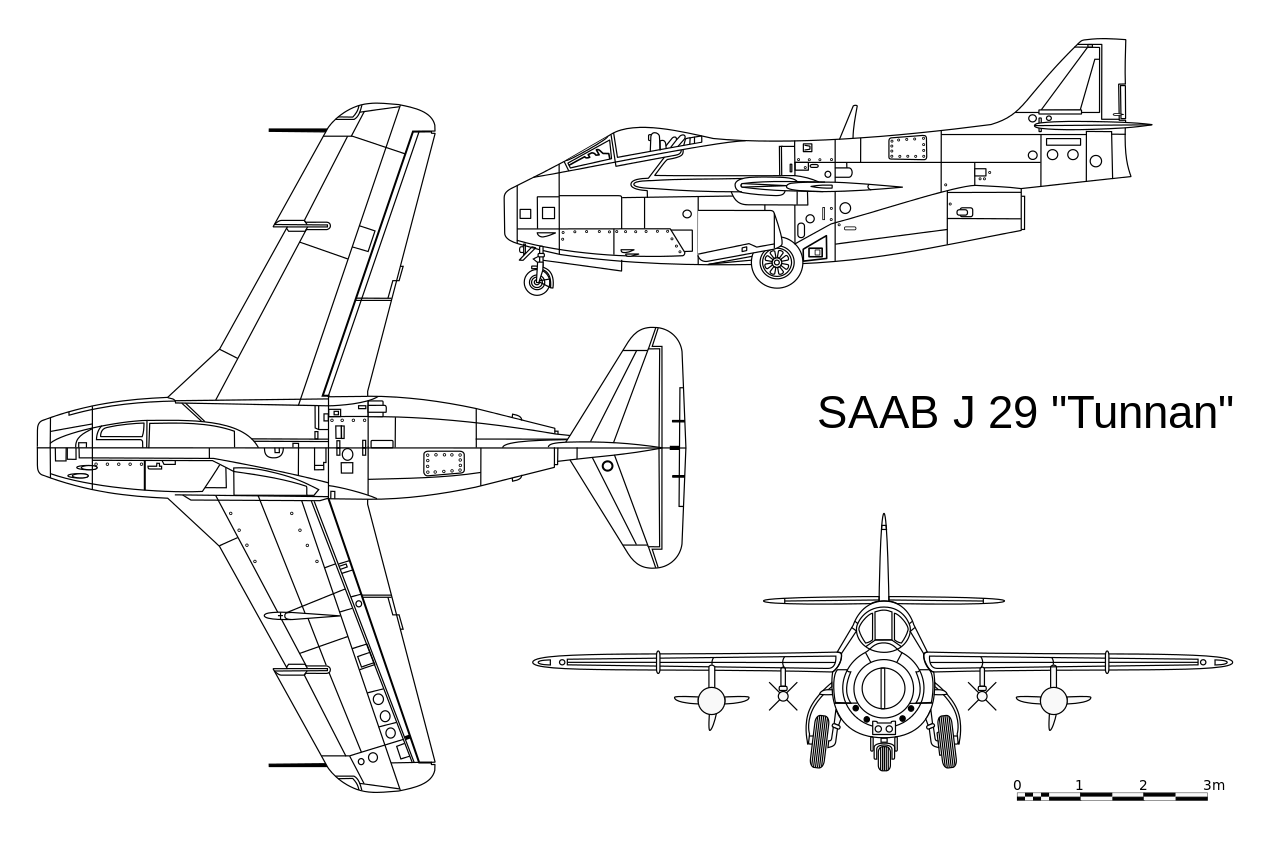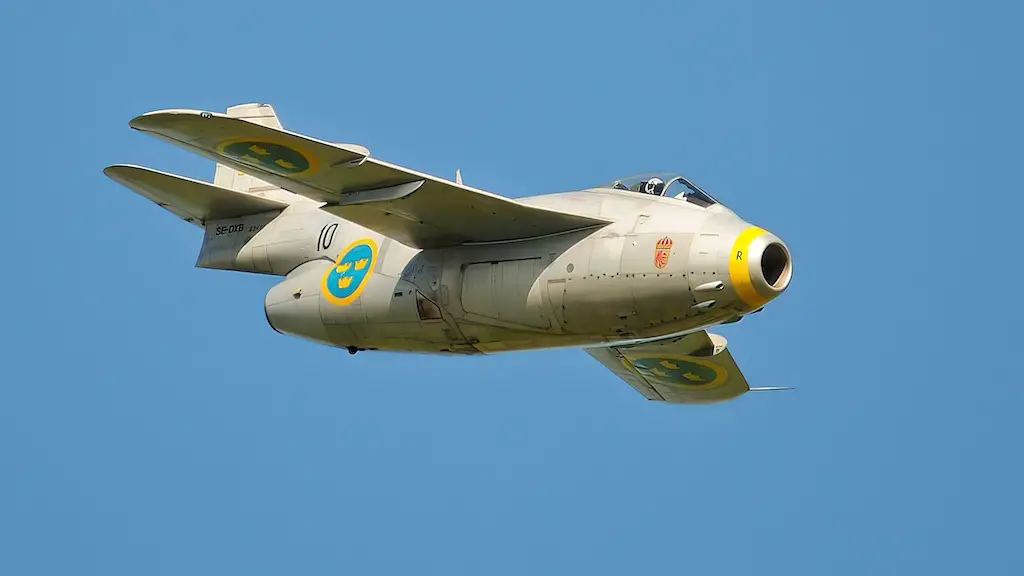
The SAAB 29 Tunnan, a unique Swedish jet fighter, emerged as a symbol of innovation and determination in the aviation industry during the Cold War era. The Tunnan’s groundbreaking design and exceptional performance played a critical role in positioning Sweden as a powerful force in military aviation. Let’s explore the origins, design, and legacy of the SAAB 29 Tunnan.
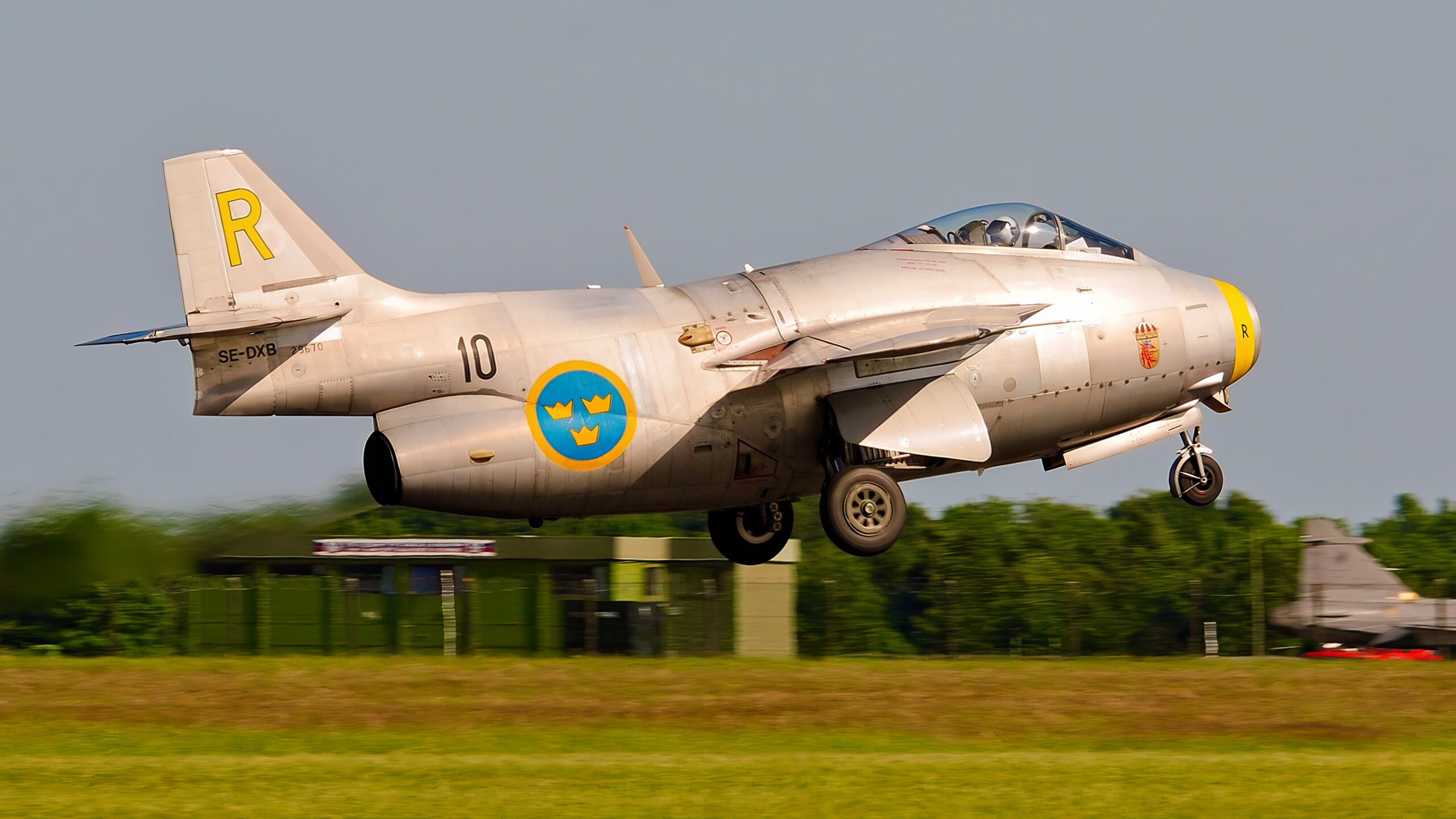
Origins
As tensions rose during the Cold War in the late 1940s, Sweden felt the need to create a state-of-the-art jet fighter to protect its neutrality and defend its airspace. In response, the Swedish aircraft manufacturer SAAB (Svenska Aeroplan AB) designed and produced the SAAB 29 Tunnan, a product of the company’s unwavering pursuit of innovation and excellence.
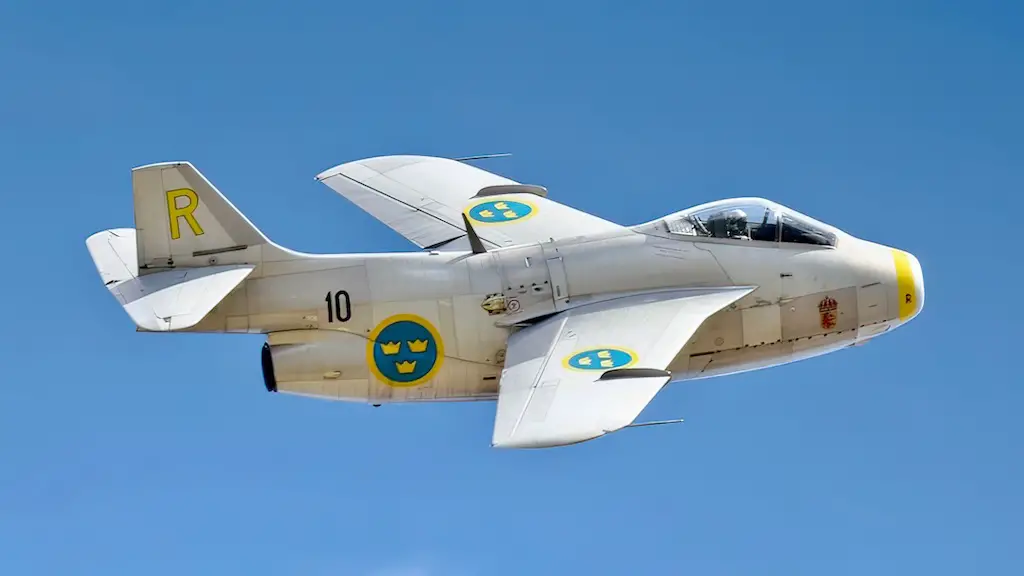
Design
Affectionately known as the “Flying Barrel” due to its distinct shape, the SAAB 29 Tunnan was a trailblazing aircraft in its time. It stood among the first jet fighters to feature a swept-wing design, which contributed significantly to its impressive speed and agility. The Tunnan’s distinctive rounded fuselage and slender wings housed a powerful de Havilland Ghost turbojet engine, which was considered state-of-the-art at the time.
The aircraft’s design drew heavily from German research on swept wings and high-speed flight conducted during World War II. Led by SAAB’s chief designer, Tore G. E. Lundström, Swedish engineers quickly recognized the potential of this research and integrated it into the Tunnan. The aircraft’s wings were swept back at a 25-degree angle, allowing it to achieve speeds exceeding 620 mph while maintaining excellent maneuverability.
The Tunnan’s design included an ejection seat and a large bubble canopy, offering the pilot exceptional visibility. It was armed with four 20 mm automatic cannons and could carry various external ordnance, such as air-to-air missiles, air-to-ground rockets, and bombs.
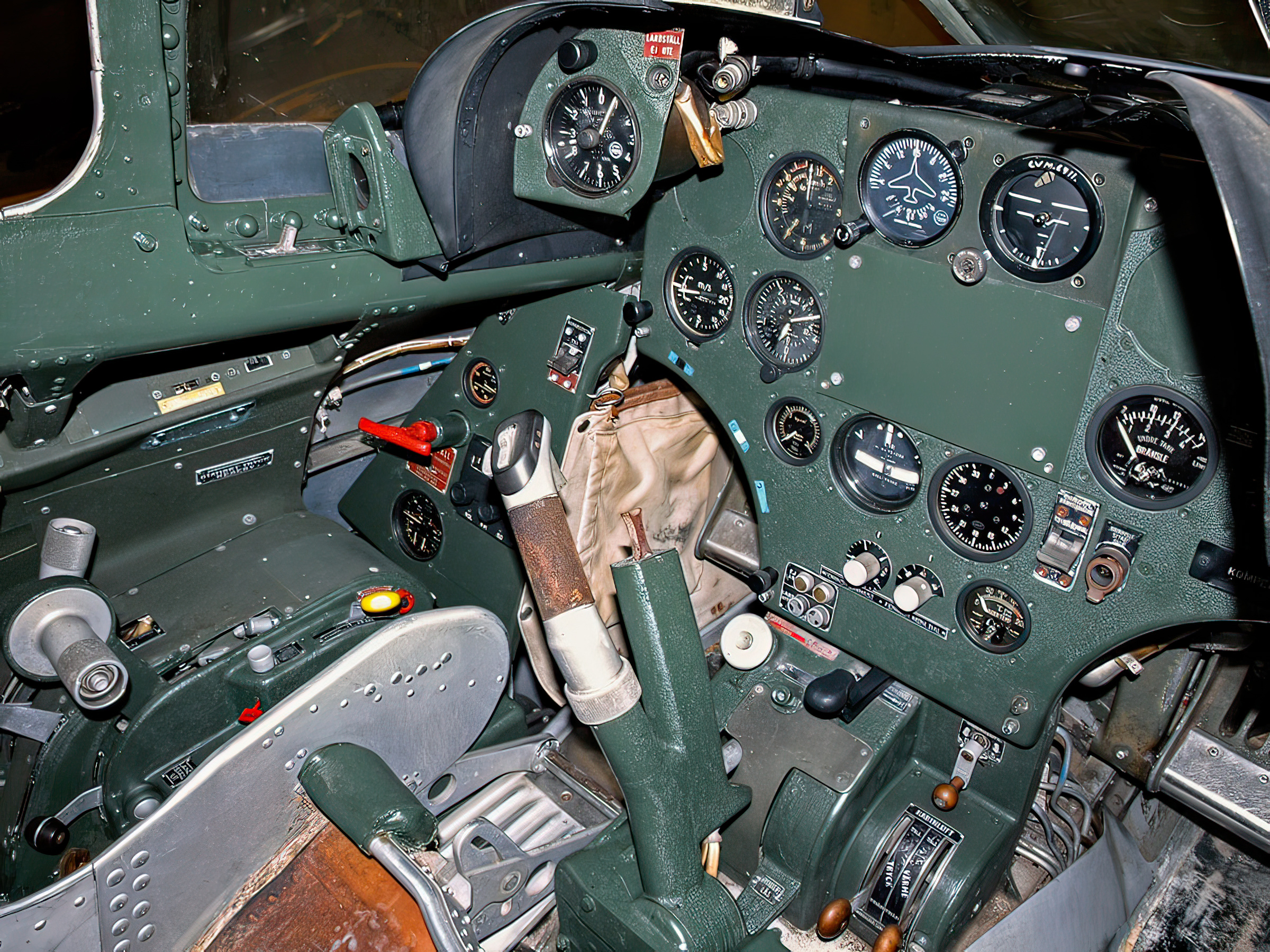
Operational History
Pilot Robert Moore flew the SAAB 29 Tunnan for the first time on September 1, 1948. Following a series of successful test flights, the aircraft entered service with the Swedish Air Force in 1951 and quickly gained a reputation as a highly capable fighter. The Tunnan served in a variety of roles, including air defense, ground attack, and reconnaissance.
Throughout its service life, the Tunnan participated in numerous international exercises and operations, showcasing its capabilities to the world. In 1954, the Tunnan notably set a world speed record for aircraft flying over a closed-circuit course, reaching an average speed of 607.05 mph.
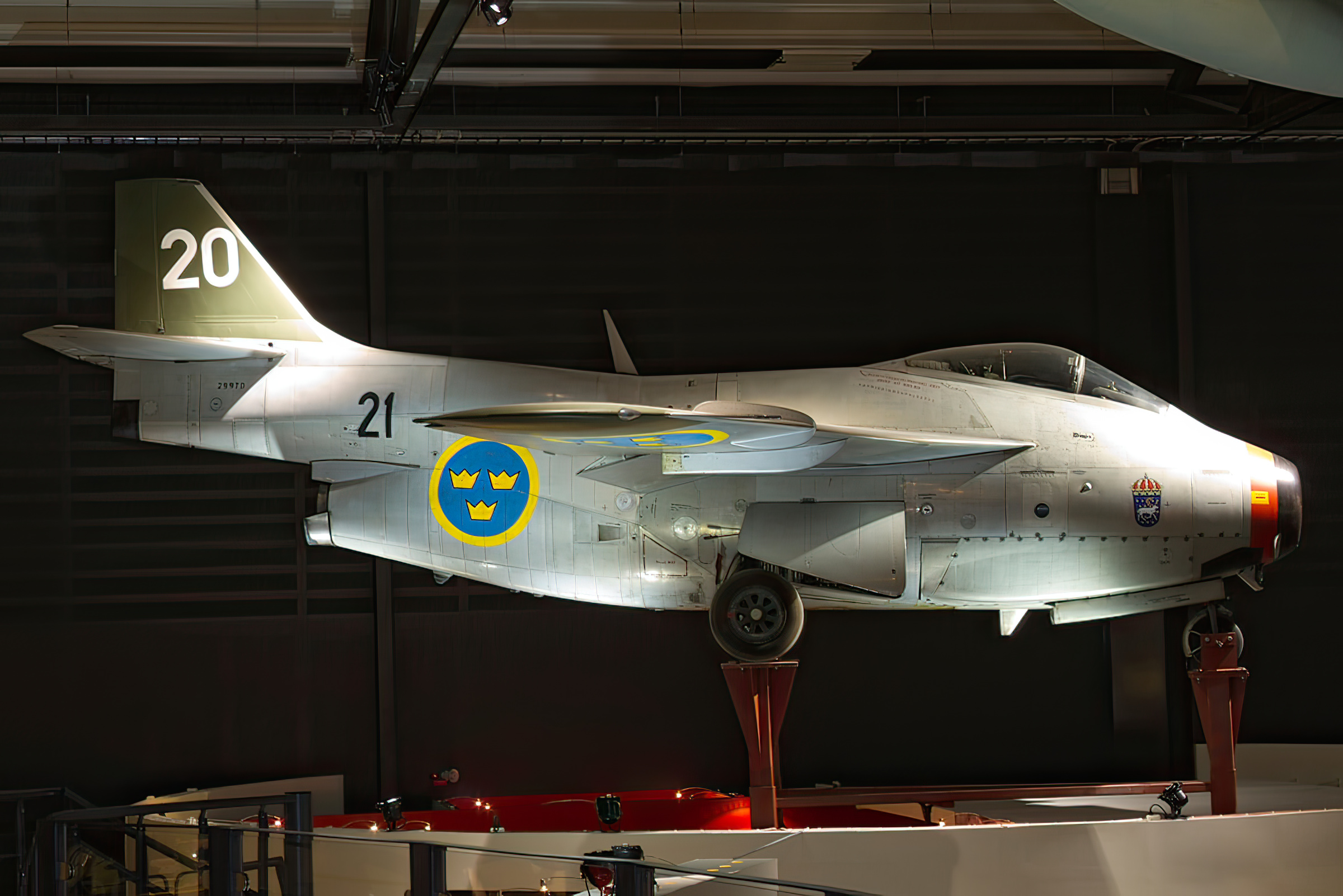
Legacy
The SAAB 29 Tunnan served with the Swedish Air Force until the early 1970s, and some units were exported to Austria and Finland. Although more advanced aircraft like the SAAB 35 Draken and the SAAB 37 Viggen eventually replaced it, the Tunnan’s innovative design and performance left a lasting impact on military aviation history.
Today, the Tunnan symbolizes Swedish innovation and serves as a reminder of the nation’s contributions to the development of cutting-edge aerospace technology. Museums around the world display several Tunnan’s, and a few enthusiasts continue to fly privately-owned examples.
